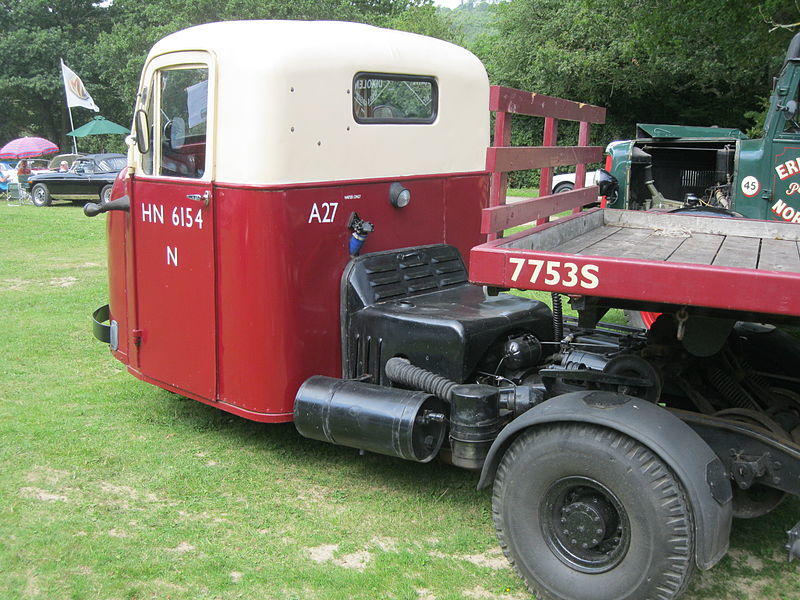Pretty much everything that you ever buy at one point or another has been on a truck. Semi-trucks are just a crucial part of our civilization and economy and that is why manufacturers are constantly pushing for greater efficiency and performance. However, nowadays most semi-trucks look a bit similar, even though in history we had some pretty weird examples. Just look at the mechanical horse Scammell Scarab – one of the most bizarre-looking semi-trucks in the world.
Mechanical horse is its actual nickname. Back in the beginning of the 20th century rail companies in Great Britain had to use horse carriages for short distances. This, of course, is not very effective, but there were no trucks that were small enough to replace horses. In 1929 Karrier Colt was introduced – a three-wheeler truck, which was small enough to replace horse wagons and yet more efficient and easier to maintain.

Karrier Colt was called a mechanical horse because of its role in pulling trailers. It wasn’t very stable or fast, but rail companies didn’t really care for these characteristics. However, in 1930 a new improved three-wheeler semi-truck Karrier Cob was introduced and a bit later Napier & Son Company designed an even better mechanical horse and sold the design to the famous truck manufacturer Scammell.

And so in 1934 Scammell started manufacturing its own Mechanical Horse. Its front wheel could turn 360 degrees, which gave the truck unprecedented manoeuvrability. The automatic hitch mechanism received a lot of compliments from people who were working with these machines, because it allowed quick change of semi-trailers. This tiny truck had a wooden cabin which, at the beginning of the production, didn’t even have doors. Buyers could choose from two versions – the 1125 cc engine could tow 3 tons while the 2043 cc engine had a 6 ton towing capacity.

Scammell Mechanical Horse was widely used by rail companies, postal service and even military, which used the little truck in its warehouses as well as on aircraft carriers. However, the Mechanical Horse had disadvantages, the most obvious of which was the high centre of gravity. The engine was mounted in a very high position and off-centre to the left, which made the truck behave differently when turning left or right. These problems were addressed in 1948 when a new version, called the Scarab, was introduced.

Scarab had a fully metal cabin, stronger frame and the 2 litre engine now used in both versions was installed lower and closer to the centre of the chassis. Scarab could reach about 32 km/h, which was more than adequate, because it was unmatched for its manoeuvrability. It even retained the front wheel, which could turn 360 degrees. Most importantly, Scammell Scarab was reliable and easy to maintain, because the engine was very easy to reach. Companies didn’t baby these machines – they were working hard and working very well.

Eventually, after 19 years of production it was time to replace the Scarab. In 1967 Scammell introduced the Townsman – a new three-wheeler semi-truck with a glass fibre body. It looked completely different and could reach 80 km/h. However, despite how modern the Townsman looked the history of the mechanical horse was over – its production ended in 1968 because of new regulations for semi-trucks.

In the period of 1934-1968 Scammell sold over 30 thousand mechanical horses. Scarab, of course, was the most successful model. Sadly, there are not many Scarabs surviving till this day. This happened because they were used as tools and scrapped when they were done. No one protected them because no one thought they would become valuable museum pieces someday. However, it is a very interesting machine and little weird piece in the puzzle of the history of the semi-trucks.





